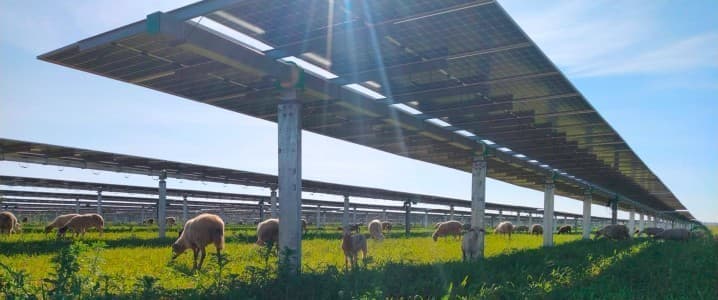As governments around the world push to go green, companies across the globe are investing heavily in research and development of innovative ways to improve renewable energy production. As companies build more powerful panels and bigger turbines, new technologies are making traditional renewable energy projects like solar and wind farms much more efficient. Now, a German team believes it has found a new concentrating system that could significantly increase solar energy production.
Traditional solar panels rely on silicon-based solar cells that absorb light across the visible spectrum, but only slightly. These solar cells need to be several micrometers thick to be able to absorb enough protons to generate electricity, which makes them heavy, expensive and difficult to place in tight spaces. In contrast, thin-film solar cells made with organic dyes are just 100 nanometers thick and are cheaper and lighter; however, they can only absorb a small portion of the solar spectrum. Scientists have been searching for a solution for years, aiming to increase the efficiency of solar panels while keeping weight and cost down.
Now, scientists at the University of Würzburg in Bavaria, Germany, believe they may have found the structure needed to significantly enhance solar power generation. The researchers recently published a study in the journal Chem demonstrating the use of the URPB system. The URPB system, an acronym for Ultraviolet, Red, Violet, Blue, is based on the photosynthetic antennae of plants and bacteria that can efficiently capture sunlight. The URPB model uses four different dyes stacked in a precise configuration that allows it to efficiently capture light across ultraviolet, visible, and near-infrared wavelengths.
Related: Standard Chartered: Oil prices to rise well above $90 a barrel
During testing, the team managed to convert 38 percent of the incoming light into useful energy, compared to less than 1 percent to a maximum of 3 percent with the four dyes alone. “Our system has a band structure similar to inorganic semiconductors, meaning it absorbs all colors of light across the entire visible light range, and we take advantage of the high absorption coefficients of organic dyes. As a result, we can absorb large amounts of light energy in a relatively thin layer, similar to natural light-harvesting systems,” explains Frank Würthner, professor of chemistry at JMU.
The next challenge is to scale up the process for commercial use. While the technology has been successfully used to generate energy in laboratory environments, using new technology in real-world settings always poses major challenges.
It is the latest technology being tested around the world to enhance solar energy production. Driven by increasing financial incentives such as public funding and tax breaks, and the need to increase the world's renewable energy capacity to reduce fossil fuel consumption, companies around the world are investing heavily in research and development in the solar energy sector. Photovoltaic production has improved dramatically over the past decade. Solar panel efficiency has increased from about 17% in 2012 to 22-29% today, production costs have fallen, and the price per watt of solar panels has fallen from about $5 in 2000 to less than 50 cents today.
According to the International Renewable Energy Agency (IRENA), solar photovoltaics (PV) is the world's fastest growing energy source, growing approximately 26-fold since 2010. By the end of 2022, global installed solar PV capacity will reach 1,047 GW, with 191 GW added in 2022 alone.
Earlier this year, Turkish researchers published a study showing the potential of a hemispherical solar cell structure that could absorb up to 66 percent more light than conventional flat panels. The team is now considering building prototypes to test the technology, which looked promising in computer simulations.
Perovskite solar cells (PSCs) are also generating optimism in their use, thanks to their high performance and low manufacturing costs. PSCs have made great strides in recent years, with efficiencies increasing dramatically from around 3% in 2009 to over 25% today. As a result, the U.S. Department of Energy (DoE) and other public and private organizations around the world are investing heavily in improving PSC technology.
To date, most testing of PSCs has been done in laboratory environments. But a national team of U.S. researchers, led by the University of North Carolina, is moving testing outdoors. The U.S. Department of Energy's Perovskite PV Commercialization Accelerator (PACT) Center has successfully used the technology outdoors for 29 weeks, achieving an operational efficiency of over 16 percent. “Real-world demonstrations are an important step toward commercialization, and we hope that by providing these capabilities, PACT will enable researchers and companies to leverage this data to improve reliability,” explains Laura Schelhas, a research chemist at NREL.
Article by Felicity Bradstock of Oilprice.com
Other popular articles from Oilprice.com:

